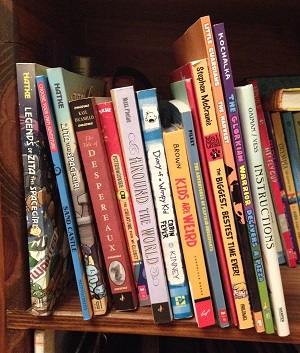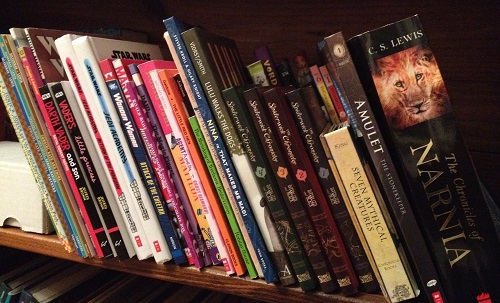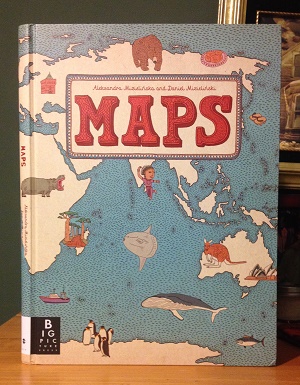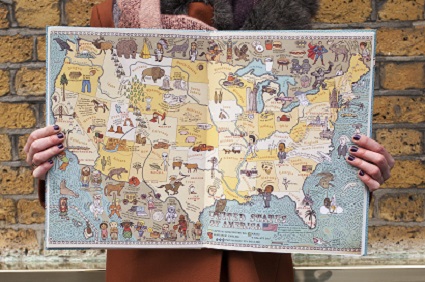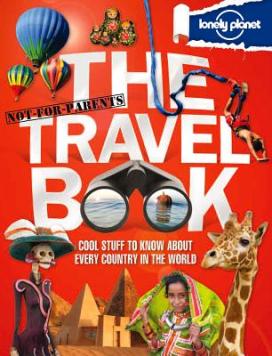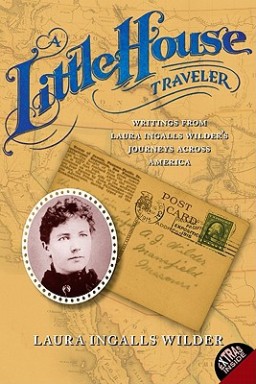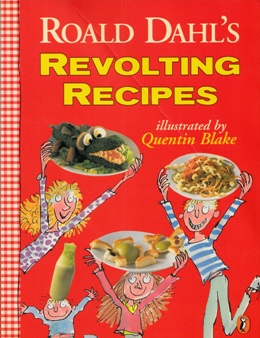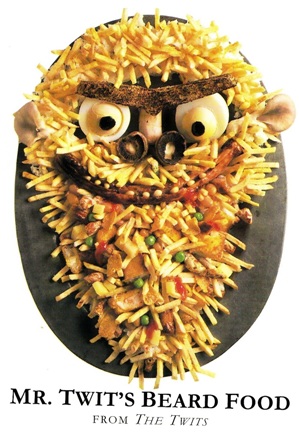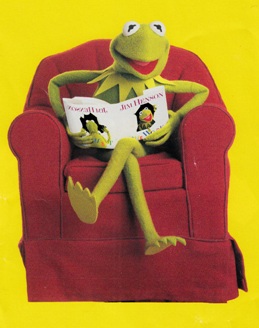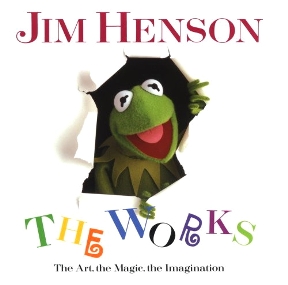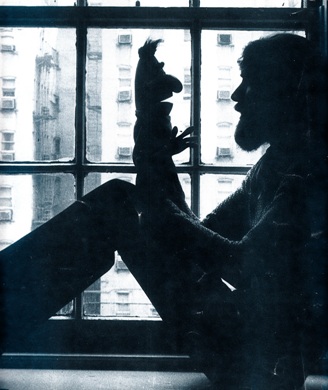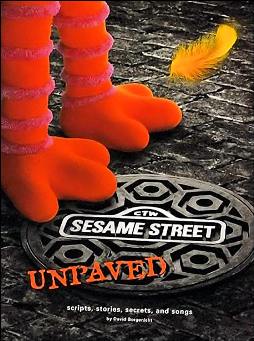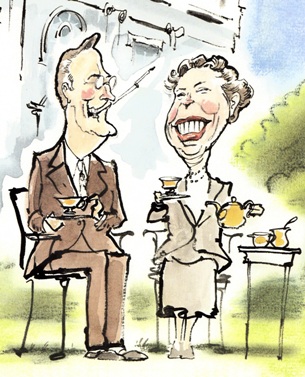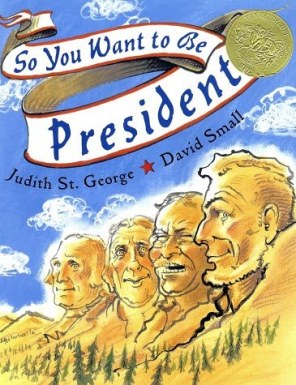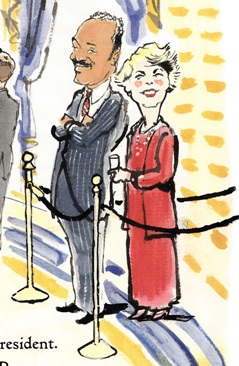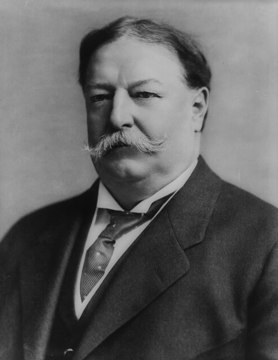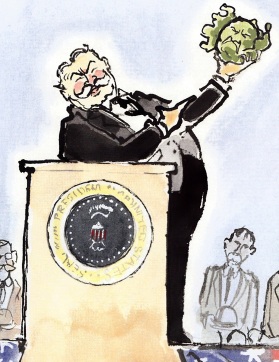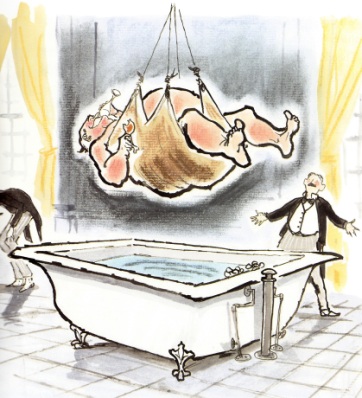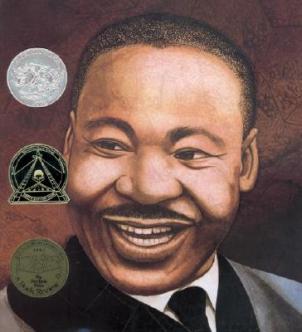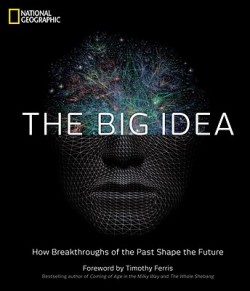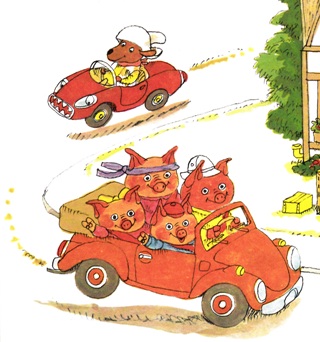
The right reading material is a MUST for any good family road trip...
Whenever we get close to school vacation breaks or whenever I’ve finally banked so many vacation days at work that I have to start taking time off (or else lose it), our family mentally begins preparing itself for spending a whole lot of time in the family car. We start making mix playlists for the iPod, we start buying local-color travel guides for the freeways we’ll be traveling, we stock up on Trader Joe’s snacks, and we mark every Panera, Starbucks, and Chick-Fil-A on our Google Map printouts (good eats and reliably clean bathrooms). We’re a car trip family, plain and simple, and our daughter, as a result, has had to become comfortable with sitting for very, very long stretches of time strapped in a backseat booster.
She’s five now and she’s suffered through multiples drives from Michigan to various road-trip destinations – Chicago, Philadelphia, Cape Cod, Brooklyn, Atlanta, Nashville, and many, many trips to Florida to visit family. And, knock on wood, for the most part, she’s been amazing in the car. She chills out, she doesn’t complain, she enjoys the journey, and, best of all, she almost NEVER watches the portable DVD player we secretly bring on each trip as our “weapon of last resort.” She basically just has four main criteria for giving us no hassles on a car trip – As parents, we need to bring 1). Music she likes, 2). Lots of snacks, 3). Some toys (normally action figures) to play with, and 4). A metric TON of books. And that seems like a pretty fair deal to me. If I’m going to strap her into the backseat of a car for two days in a row, with no control over where she’s going and no ability to unbuckle herself and move around, the LEAST I can do is let her bring as much reading material as she wants. So, inevitably, we end up bringing one overflowing, ridiculously heavy tote bag full of books on each trip.
And, over the years, I’ve received a fantastic education on which kids’ books work well for road trips and which don’t. I’ve watched my daughter destroy an $18 Caldecott winner ten minutes into the trip and never look at it again, and I’ve watched a $5 bargain table book from Barnes & Noble captivate her interest across three states. Road trip books are a unique breed, but there are a few simple rules and constants that, for me, have really helped define what books are worthy to spend 20 hours in the backseat resting on my daughter’s lap. So, as a service to all the other current and future car trip families out there, here are my picks for eight essential road trip books for kids.
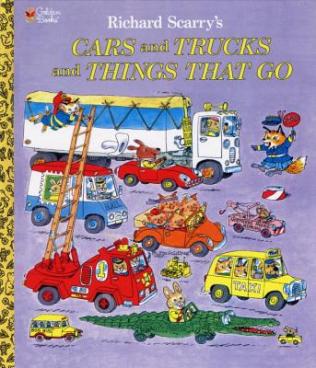
One of the best road trip kids' books of all time...
I’m just going to put this out there – Richard Scarry books are, hands-down, the BEST road trip kids’ books of all time. They really are. And many of the reasons why this is true that go well beyond Scarry’s obvious skill as a storyteller and illustrator. First, normally, Richard Scarry’s books are HUGE, which is PERFECT for a car trip. His books, like Cars and Trucks and Things That Go, are large, wide but thin hardcovers that give kids 60+ pages of reading material. (They’re also crazy durable and fit easily into tote bags.) When a kid opens a big Richard Scarry book on their lap in a car, they’re opening up a whole new visual world for them to lose themselves in. The opened book almost takes up their whole field of vision, which is GREAT for a road trip. It makes the reading experience that much more immersive and engaging.
Next, Scarry packs a ridiculous amount of detail into his two-page spreads. One spread might have forty vehicles, a whole town map, multiple animal families doing multiple things, 30+ jokes, and tons of visual easter eggs and hidden pictures for your kids to obsess over and while away the hours with. (My daughter really loves trying to find Goldbug and Lowly Worm on each page.) Scarry gives his young readers an experience akin to looking at an illuminated manuscript or a medieval tapestry or a Diego Rivera mural – they could flip through Scarry’s illustrated tableaus for days and still discover new details that hadn’t jumped out at them before.
Scarry’s Cars and Trucks and Things That Go is a particular favorite because it’s really funny – there’s a running joke about the police chasing down the delinquent Dingo Dog that my kid adores – and it’s thematically perfect for reading in the car. Cars and Trucks and Things That Go is like a travelogue of the most insane freeway ever, filled with every variation of car or truck imaginable, so it’s a fantastic visual companion for a kid who’s stuck watching traffic out their window all day. While Cars and Trucks and Things That Go seems made for road trips, any of the large format Scarry books work well too – we’re also big fans of Scarry’s Great Big Schoolhouse, Scarry’s Favorite Storybook Ever, The Adventures of Lowly Worm, and the compilation of his Sam and Dudley mysteries, The Great Pie Robbery and Other Mysteries. We’ve taken at least one Scarry book with us for every car trip we’ve gone on for the past three years and I don’t see that trend ending anytime soon.
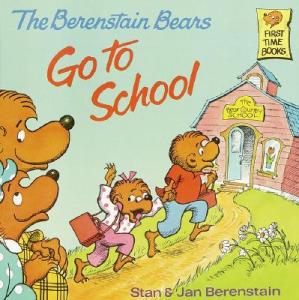
The Berenstain Bears are our go-to "take into the restaurant" books...
I run hot and cold on the Berenstain Bears books. On one hand, I like them because they were the first series books that my daughter ever fell in love with and I think most of the earlier titles in the series are really well executed. On the other hand, some of the characters are a bit one-dimensional and sitcomy (Mama can be such a wet blanket), and the more recent Berenstain Bears aren’t nearly as good as the earlier titles (and they get increasingly more preachy as the years go on). All that being said, I think Berenstain Bears books are great car trip titles. Why? On a practical level, the books are inexpensive (no worries if you lose one on the road), they’re hard to destroy, and they’re thin enough that you can easily bring 10 of them with you and still have plenty of room in your daypacks. (They’re also IDEAL books to take into restaurants – compact, light, tough, and way more manageable than Richard Scarry’s enormous tomes.)
On a creative level, Stan and Jan Berenstains are really skilled visual storytellers and, even if your kid isn’t reading yet, they can follow the action via the illustrations and still understand the majority of the story. Plus, in my experience, on a road trip, kids tend to pick a few items to obsess over – a particular toy, a CD, a book series – and they spend the majority of the trip ridiculously focused on those items. If your kid is into series fiction, find AS MANY of those titles as you can manage and bring them with you. I think the recurring characters and familiar story structures really sit well with kids trying to pass the time in the backseat. [read the rest of the post…]
